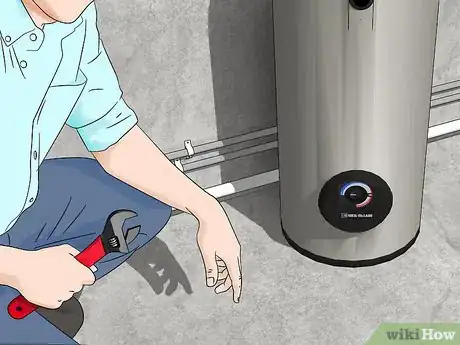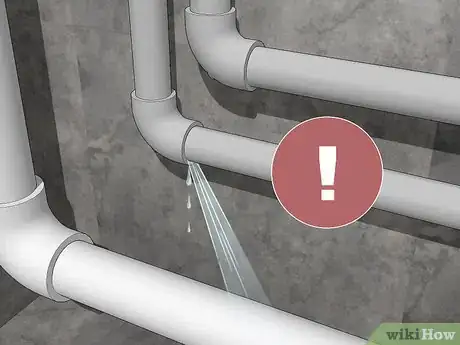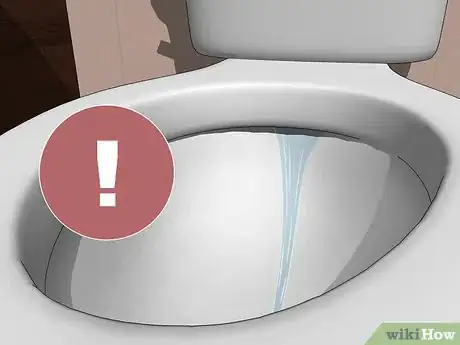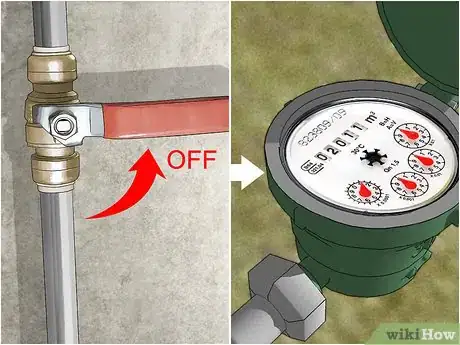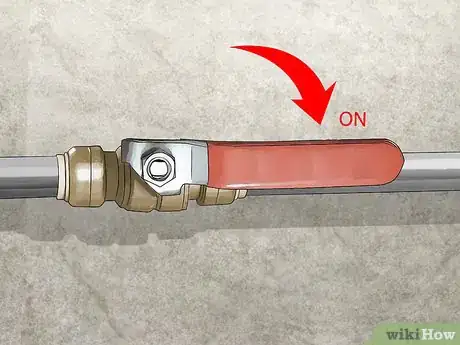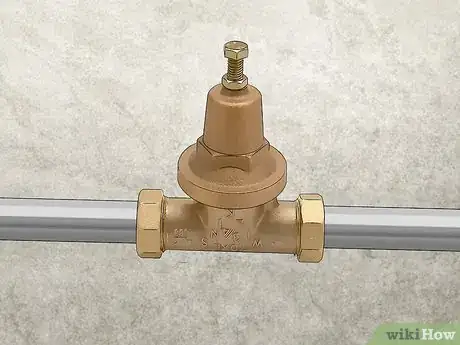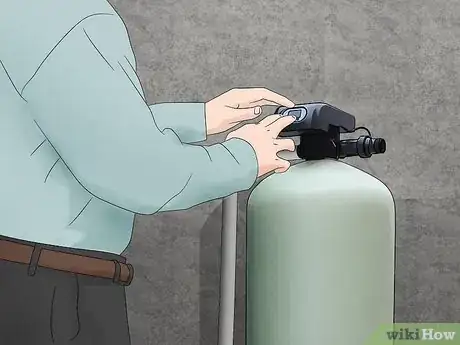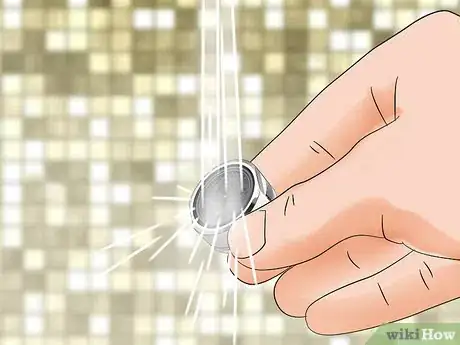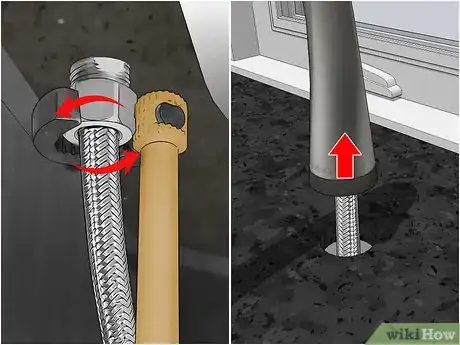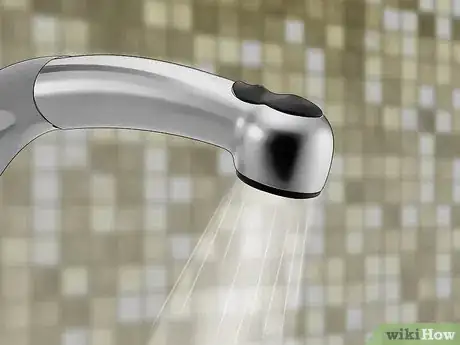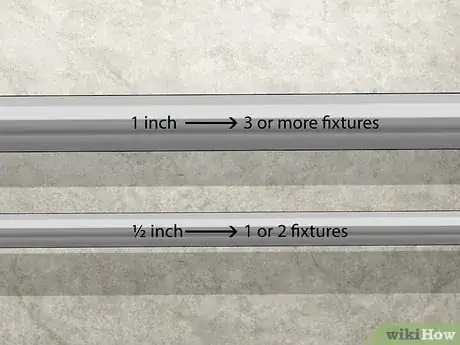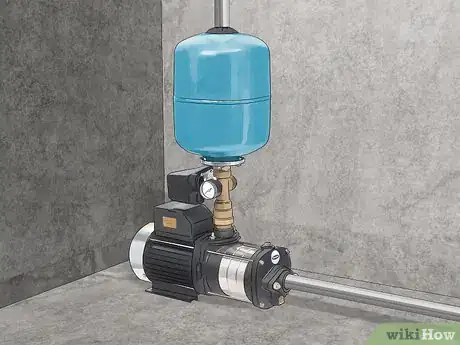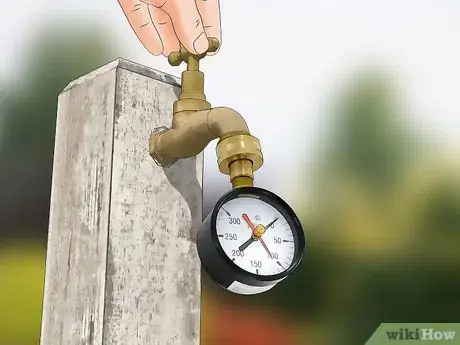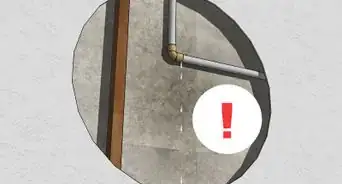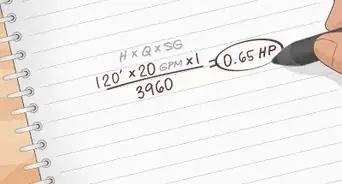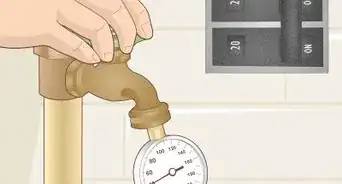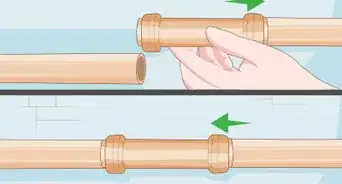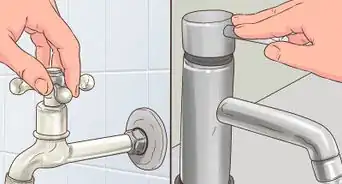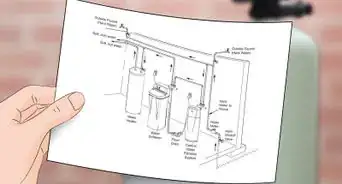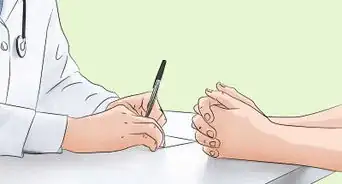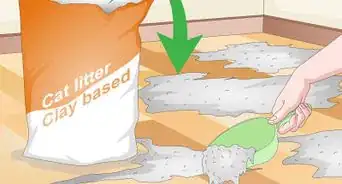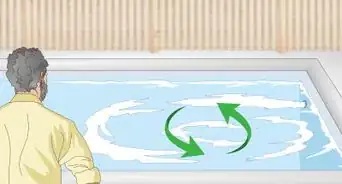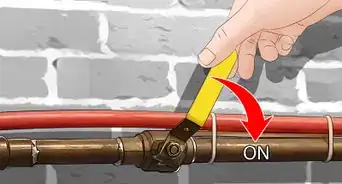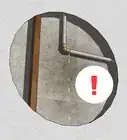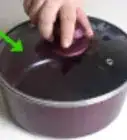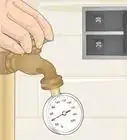This article was co-authored by James Schuelke. James Schuelke, along with his twin brother David, is the co-owner of the Twin Home Experts, a licensed plumbing, leak detection, and mold inspection company based in Los Angeles, California. James has over 32 years of home service and business plumbing experience and has expanded the Twin Home Experts to Phoenix, Arizona and the Pacific Northwest.
There are 11 references cited in this article, which can be found at the bottom of the page.
This article has been viewed 1,023,014 times.
Increasing your water pressure often seems like a daunting chore. There are many causes of low water pressure, yet many surprisingly simple remedies that you can perform yourself. To increase water pressure, decide if you need to only increase pressure at one faucet, fix a broad yet recent low pressure problem, or address a history of low pressure. The exact solution will vary depending on the issue you're dealing with.
Steps
Fixing a Recent Low Pressure Problem
-
1Address problems with hot water supply. If only your hot water taps have low pressure, look for a problem at your water heater. Here are the most common problems:[1]
- Sediment clogging the water heater or the hot water supply line. flush the tank, then hire a plumber if that doesn't work. To prevent this happening again, replace the anode rod regularly and consider Installing a water softener.
- Hot water supply pipes that are too small. In most cases the pipe leading from your water heater should have at least a ¾" (19mm) diameter.
- Leaks in the valves or the tank itself. Only attempt to repair these yourself if the leak is minor and you have experience with plumbing projects.
-
2Check for leaky pipes. Leaks are a common cause of low pressure.[2] Conduct a quick check for damp spots beneath pipes, especially at the main supply line. Fix any leaky pipes you encounter.
- Small damp spots may be caused by condensation. Put down a couple paper towels and come back the next day to see if they are wet. If they are, you have a problem.
Note: The supply line typically enters the house from the side in mild climates, or from the basement floor in cold climates.
Advertisement -
3Test your toilet for leaks. A leaky toilet mechanism fails to block the flow from the tank to the bowl. Put a few drops of food coloring in the tank, and come back after an hour or two without flushing the toilet. If the food coloring has entered the bowl, your toilet needs a repair. Typically, all it needs is a new flapper or another cheap and easy fix.
- If you can hear your toilet running constantly, that's definitely a drain on your pressure. Learn how to fix it.
-
4Check the water meter to rule out leaks. If you still haven't found any leaks, it's time to check your water meter to confirm or deny their existence. Shut off all water in the house, then read the meter. There are two ways to check for leaks using the meter:
- If the small triangular or disk-shaped dial on the meter is spinning, water is still flowing. Assuming everything is shut off properly, you have a leak.
- Write down the reading, wait a couple hours without using any water, then check again. If you get a different reading, you have a leak.
-
5Confirm the shut off valve is completely open. Look for the master shutoff valve near your water meter. If it's been knocked to a partially closed position, turn it back to fully open. This is rarely the problem, but it only takes a few minutes to test.
-
6Inspect the Pressure Reducing Valve. Homes on low ground often have a PRV installed where the line enters the building. This valve, usually shaped like a bell, reduces the supply of water to a safe pressure for your building. On a typical model, you can turn the screw or knob at the top of the PRV clockwise to increase water pressure.[3] It's best to turn this only a couple times, keeping track of the number of turns. Going too far can damage your plumbing.[4]
- If adjusting the PRV doesn't make any difference, shut off the water supply and disassemble the valve. You may need to replace a part or the entire valve, or just clean the parts. Finding manufacturer instructions is recommended.
- Not all homes have a PRV, especially if the city water supply is low pressure or the building is on high ground.
-
7Test your water softener. If your home has a water softener installed, try setting it to "bypass." If the pressure improves, have someone inspect your softener for issues.[5]
Increasing Pressure at One Faucet
-
1Clean the aerator.[6] Unscrew the aerator at the end of the faucet with a pair of pliers. Disassemble the aerator, making a note of how it fits together. Rinse off dirt or sediment, then run the faucet for a couple minutes to dislodge sediment in the pipe. If the aerator parts still look dirty, soak them in an equal mix of white vinegar and water for three hours.
- You can clean showerheads with the same process.
Tip: To avoid scratches, wrap cloth around the aerator before removing.
-
2Disassemble the faucet. If the faucet still has low pressure, unscrew the stem retainer nut and pull the stem straight up. You may need to remove a retaining collar first.
- When dealing with a single-handled tub faucet, you will encounter a screw on each side, under the large chrome piece. Assure that these are both fully tightened before removing the stem.
-
3Repair the faucet. Check for problems based on what you see:
- If you see a washer and/or spring at the base of the stem, remove them carefully with a screwdriver. Rinse off sediment, or replace them if broken.
- If you see a more complex mechanism, check this article for instructions.
-
4Flush out the faucet. After repairing anything that seems amiss, reassemble the faucet. Block the faucet with a cup and turn the water on and off a few times. This should flush out anything causing the clog.
Addressing a History of Low Pressure
-
1Replace old supply pipes[7] . Locate the main supply line at the side of your house, or in the basement if you live in a cold climate. If your supply pipe is silver and magnetic, with threaded fittings, it's galvanized steel. Old galvanized pipes often clog with mineral buildup or corrosion, slowing water flow. Replacing these with copper or plastic pipes may solve your problem.
-
2Check pipe size. A small pipe can cause problems if it can't meet your water needs. As a rule of thumb, the supply pipe diameter should be at least ¾" (19mm), or 1" (25mm) if it serves a 3+ bathroom home, while ½" (13 mm) pipes should only serve one or two fixtures.[8] A plumber can give you a more specific recommendation based on your water use.
Tip: PEX pipes have especially thick walls, and therefore a smaller inner diameter. If you're replacing a metal pipe with PEX, use a larger size than the original.[9]
-
3Address poor city supply with a water pressure booster. If you've always had this problem, phone your water supply company and ask for your neighborhood's "static water pressure."[10] If the answer is below 30 psi (2.1 bar / 21 meters of head), the city supply could be the problem.[11] Purchase and install a water pressure booster to address this, or continue tot he next step.
- Warning: If you have corroded or clogged pipes, boosting water pressure could damage or break them.
- Higher supply pressures may still be inadequate for a multi-story house or a house on a hill. 60 psi (4.1 bar / 42 meters of head) should be plenty even in these situations.[12]
- If your water supply comes from a well or gravity flow system, leave pressure adjustments to a professional.[13] [14]
-
4Test the supply pressure yourself. Find a pressure gauge that attaches to a hose bib from a hardware store. Make sure nothing in your home is using the water supply, including ice makers and running toilets. Attach the gauge to the hose bib to read the pressure.[15]
- If the pressure is lower than the water service claimed, it may be an issue with the water main. Talk to your water service and/or the local water municipality to find out whether you can get them to repair it.
- If you can't get the service to repair it, install a water pressure booster.
- Water pressure fluctuates along with demand. Try again at a different time of day to get a more accurate sense of the range.
Expert Q&A
Did you know you can get expert answers for this article?
Unlock expert answers by supporting wikiHow
-
QuestionHow can I increase water pressure in my shower?
 James SchuelkeJames Schuelke, along with his twin brother David, is the co-owner of the Twin Home Experts, a licensed plumbing, leak detection, and mold inspection company based in Los Angeles, California. James has over 32 years of home service and business plumbing experience and has expanded the Twin Home Experts to Phoenix, Arizona and the Pacific Northwest.
James SchuelkeJames Schuelke, along with his twin brother David, is the co-owner of the Twin Home Experts, a licensed plumbing, leak detection, and mold inspection company based in Los Angeles, California. James has over 32 years of home service and business plumbing experience and has expanded the Twin Home Experts to Phoenix, Arizona and the Pacific Northwest.
Professional Plumber
Warnings
- Ensure that quality plumbing supplies are used and that work is well done and fully tested. A permit is probably required. Leaks (immediate, or after corrosion) due to poor quality materials or badly done work can lead to water damage and mold, mildew and fungus exposure. Work done without permits may block sale of your home until problems are corrected.⧼thumbs_response⧽
References
- ↑ http://inspectapedia.com/water/Municipal_Water_Pressure_Diagnosis.php
- ↑ James Schuelke. Professional Plumber. Expert Interview. 1 October 2019.
- ↑ http://www.wattsindustries.com/images1/7/PDF/PRV_Applications_Guide.pdf
- ↑ http://inspectapedia.com/plumbing/Water_Pressure_Regulator_Adjust.htm
- ↑ http://www.waterone.org/customer-service/troubleshooting/water-pressure
- ↑ James Schuelke. Professional Plumber. Expert Interview. 1 October 2019.
- ↑ James Schuelke. Professional Plumber. Expert Interview. 1 October 2019.
- ↑ http://www.askthebuilder.com/properly-size-your-water-lines/
- ↑ http://www.irrigationtutorials.com/gpm-psi-municipal-water-source/
- ↑ http://www.irrigationtutorials.com/gpm-psi-municipal-water-source/
- ↑ http://ogradyplumbing.com/blog/understanding-good-water-pressure/
- ↑ https://www.redfin.com/blog/2015/06/does-this-house-have-good-water-pressure.html
- ↑ http://www.irrigationtutorials.com/gpm-psi-pumps-and-or-wells/
- ↑ http://www.irrigationtutorials.com/gpm-psi-gravity-flow/
- ↑ http://www.irrigationtutorials.com/gpm-psi-municipal-water-source/
About This Article
To increase water pressure at one faucet, clean the aerator by disassembling it with a pair of pliers and rinsing off any dirt or sediment. You can also flush the faucet by blocking it with a cup and turning the water on and off a few times to get out clogs. If the water pressure in your house is suddenly low, make sure your shut off valve is completely open and check all of your faucets and toilets for leaks. If your water pressure has been low for a while, you may need to replace your supply pipes. To learn what to do if your city has static water pressure, read on!
